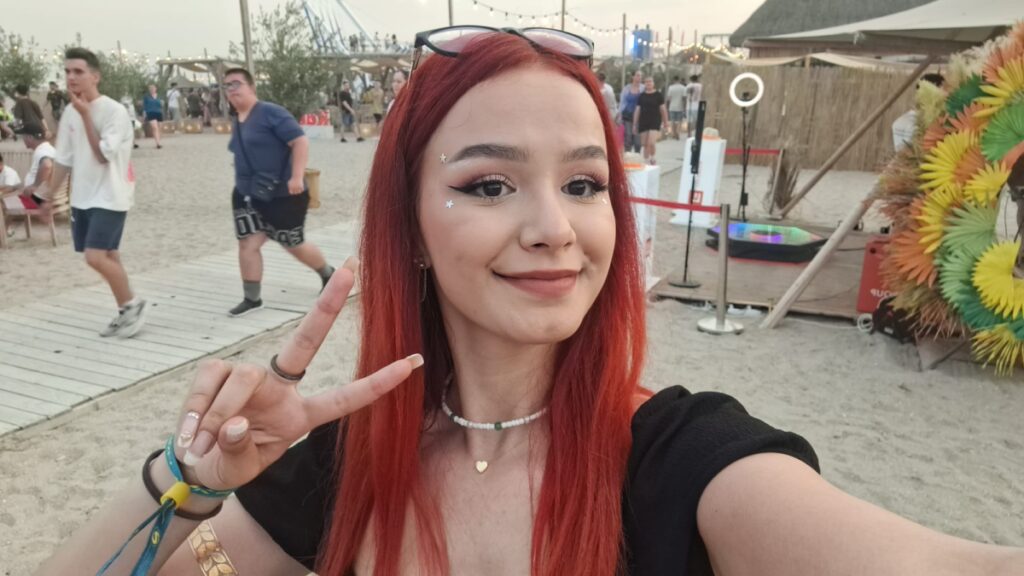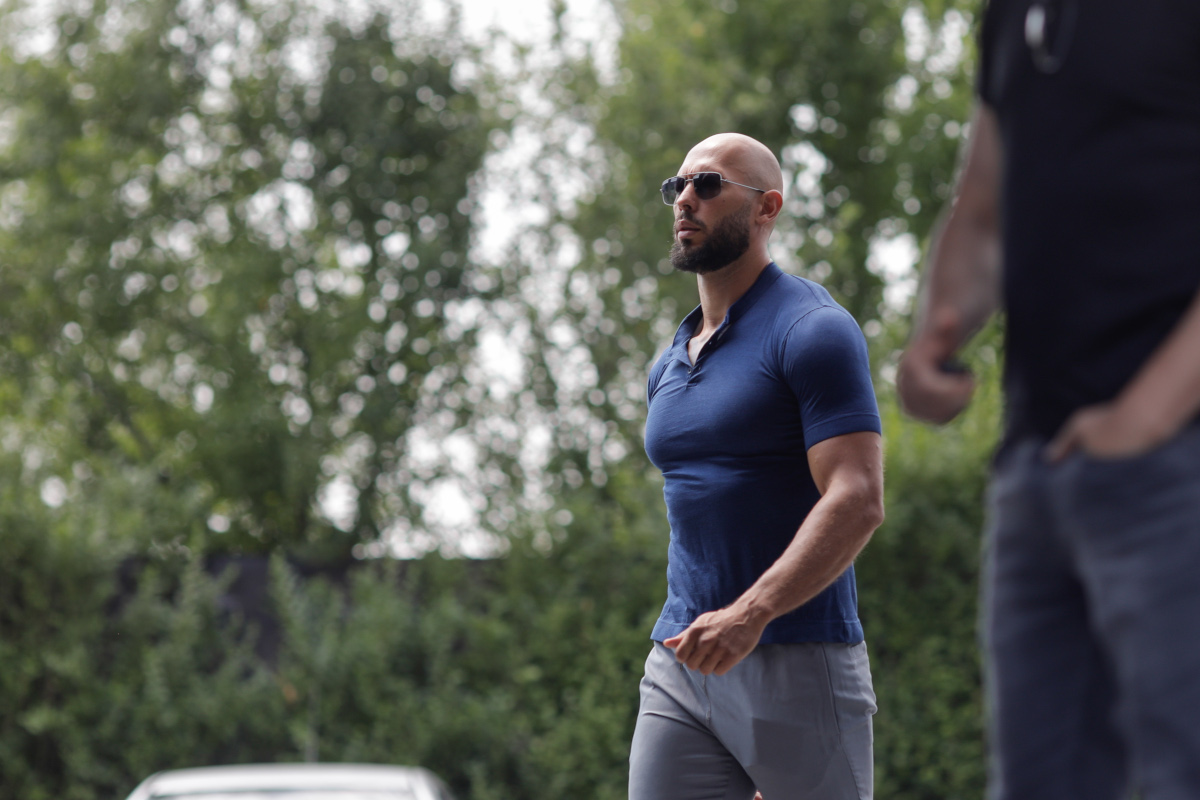
I pretended to be a foreign tourist coming to the Neversea festival to see how friendly Constanța is with tourists from other countries. I “got off” at the Constanta train station and followed the route a tourist would follow, perhaps arriving in this city for the first time. I spoke only English and watched, all along the route, for directions for foreign tourists on where to eat, public transport, cafes, places to visit and other useful things. And, obviously, if there is information about Neversea.
Constanța train station – the first interaction with the biggest city-port
So I “got off” at Constanta train station, where I got lost in the crowd of tourists coming from the train that arrived on the platform. Having travelled a few hours I surely needed a freshen up so I looked for a toilet.
I asked the lady in charge of payment how much a toilet ticket cost. She didn’t answer me but we got along in sign language, she pointed to the sheet on her desk where it said an entrance fee was three ron. I gave her the money, she gave me a piece of toilet paper and the voucher, because there is no freely available toilet paper in the cubicle. The sheet stating that the toilet was there was written in Romanian, so if I was a foreigner I understood exactly how much I needed, the figure and the currency, nothing more.
The toilet was in a pretty ok state from a hygiene point of view, I expected worse, but it was pretty clean except for some already used napkins that were thrown on the floor. The main attraction though was the sink. In the “sink room” there was a lounger and two large plastic barrels, not sure what their purpose was there.

Right next to the toilet is the space where you can leave your luggage if you don’t want to carry it around town. There was a big sign with a sign saying in both Romanian and English that you can leave your luggage there. I went to the counter, where a young man was waiting for me and I asked him how much it would cost to leave a small piece of luggage there for three hours. He didn’t talk to me either, just showed me to look at the sheets on the window of the counter to figure out the price, where all the details on the window were written only in Romanian.
I gave up on asking him and asked if he could translate what was on the sheets for me, he wouldn’t or couldn’t talk to a stranger, so I left my luggage and went to get a bottle of water.

I had five shops where I could get a drink or something to “snack” on, and if I wanted to eat, I could only buy “fornetti” or pastries at the entrance to the station.
I went into one of the food shops, where I asked for a still water. The lady in charge of the shop showed me by signs whether I wanted still or mineral water, because she didn’t understand me at first.

She showed me how much to pay using her fingers, I paid her, got the water, waited for the receipt, but didn’t get it, so I thanked her and headed for the station doors, where a large group of tourists was waiting for me, trying to cope with the taxi drivers’ insistence.
“Taxi, taxi.” On the hunt for tourists
When I arrived in front of the station, two taxi drivers approached me with the famous “Maaamaiaaa, Năvodaaari, Efooorieee, Vama Vecheeeee” or “Shall I take you, miss, to Mamaia?”.
When I replied with “No, thank you”, one of them withdrew, but the other started to be even more insistent. But it was the first time they not only understood, but someone answered, something in English.
“I take you to Mamaia lady, come, come” he said.
I refused him insistently because I knew I was going to pay at least three times the fare, finally he left me alone, and then I went to the little box where the bus tickets were sold.

I asked the lady behind the counter if she could tell me which bus to take to get to the Casino. When she heard me in English, she started laughing with her colleague: “Ha, English!”. However, she was barely the second person to even try to answer me in English. She told me I needed to take the 101 bus and showed me where to wait for it, repeating “buy ticket” so I could buy the ticket and leave. If I didn’t understand what she was talking about and how she was explaining it in Romanian, in addition to English sign language, I don’t think I could have handled the information I was getting from her.

The only sign in the station area that had English translation was a map of the bus stops in the area.
The Old Town and the guide signs for foreigners
Boarding the 101 bus, an old bus where all the information posters pasted up are exclusively in Romanian, I asked a young woman where I should get off if I wanted to go to the centre or the Casino.
She was the only person in my entire experience as a foreign tourist who understood and could speak English. The woman explained to me how many stops I had to the Casino and suggested where I should get off if I wanted to walk to the Casino area. I got off one stop early to walk further into the centre and see if there were any signs in English to guide me either to the festival, or to the main attractions of Ovidiu Square or the town.
Starting at the Dtatue of the Wolf, a symbol of the people of Constanta, which marks the entrance to the old city centre, I started walking around the area, looking for signs to guide me.
Nothing written in English, just a few small signs on various historical monuments, such as the Statue of Ovid, the Museum of Popular Art, the Statue of the Wolf, the Statue of Ovidius, the Greek Church and the former “Mercur” hotel.
When we arrived at the Casino, the only sign with an English translation that we found was the one on the railing warning not to bend down because there is a danger of falling.

At the end, I returned to Ovidiu Square, where I asked several people if they could recommend a café or other place where I could have lunch. Only two tried to answer. The first one pointed me down the street and said in Romanian “Take it down, there are plenty. Down, down there”, and the second person managed to recommend a place and explained how to get there.
If I didn’t have a phone with internet connection, with the “help” I got either from people or from the non-existent signs and plates of the institutions in English, I would have stayed in the station long and well or wandered around the city just as long and well.
.
Ne bucurăm că ne citești!
Dacă vrei să ne și susții:







Nice article. It’s obviously written by a Romanian, but it has its touch 😀 Some things I’ve understood because I’ve read the romanian one too.
Nevertheless, Constanța is not ready for tourists that are speaking solely English. The same I can say for Prague, where if you are going a bit away from the city center, that’s it, you’re lost if internet would not work.
It is baffling to me how small but cute places want to invite tourists and profit from international tourists but have no to little preparation to accommodate or direct them. Same here in Bulgaria.